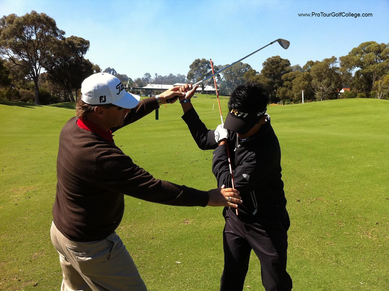 How long does it take to change a golf stroke habit? The answer is that it depends on the complexity of the change you are undertaking and the amount of time you invest in developing it. I think most golfers know that. Your way of life is a product of all the different habits you have developed knowingly and unknowingly over your life time. In the case of changing golf stroke habits it can take a long time. And here's why? The simplest way to explain it is that you have 13 major joints in your body moving in three dimensions plus the timing required to move them at the correct time and you are required to propel a golf club around your body inside of two seconds and strike a stationary sphere in such a way that the result is a solidly struck golf shot that travels to your target more often than not. I bet you thought that it was a lot simpler than that? “Swing it back and through,” “turn your body back and swing your arms through” etc. Now when you see the top professionals hitting shot after shot down the fairway and onto the green making it look easy you’ll realise that it far from easy. However even a complex activity like a golf swing can look easy when it is mastered. Today we’re seeing a lot of golf books coming out that are marketed to average amateur golfers suggesting that changing your golf swing is something that is relatively easy to learn and do. This partly explains the wide performance gap between amateur golfers and professional golfers. Amateur golfers are being exposed to information that is technically not correct. Many golf instructors know this first hand as they have had the experience of a golfer they’re teaching expecting their golf swing to perform optimally in a club competition the very next day after just 45 minutes on the lesson tee. Golf instructors are good but not that good. I have personally known of golfers to fly to the other side of the world to have a golf lesson or two with a well known golf instructor, and after paying a significant sum of money for the golf lesson they find out that the change that has been suggested will take months to improve! 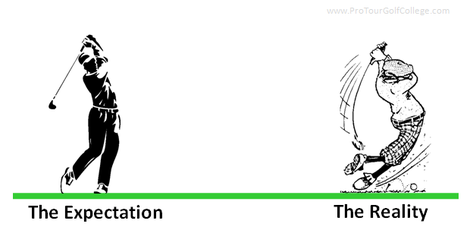 The expectations of golfers of all levels (amateurs to professionals) can be a long way from the reality of what’s really required to successfully change an aspect of your golf swing technique. The truth is that if you’re changing a feature of your golf swing technique or in-fact learning a new part, it will take time to habituate through carefully applied effort. This is worth remembering. You simply cannot buy a faster golf stroke learning process. 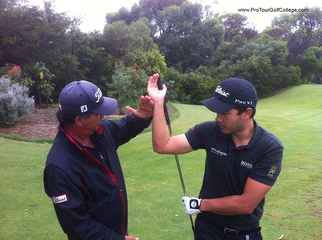 The electrical impulses you’re sending from your brain to a new set of muscles (or even the same set) to fire the muscle differently requires thousands of repetitions to strengthen the neural pathway so that the signal is stronger, more efficient and ultimately habit forming. Let me say it again... "You simply cannot buy a faster golf stroke learning process." 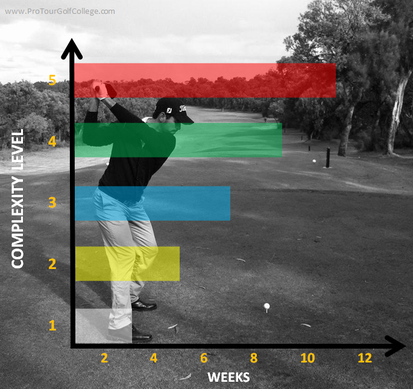 The Golf Swing Complexity Model At Pro Tour Golf College we work with our students to help them to understand the golf swing change process and the way we explain it is that golf swing change process falls into five categories that describe the complexity of the skill set and the amount of time that it is likely to take to become a habit. The complexity of the skill set in our model describes the amount of joints recruited for the particular golf stroke and the amount of rotation. A putting skill requires the fewest joints and minimal rotations whereas the full swing technique recruits the most joints and rotations. 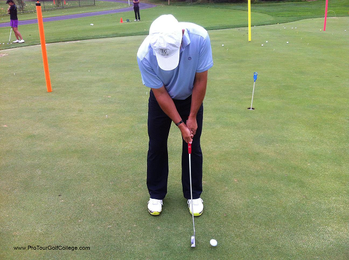 Complexity Level 1. (2 to 4 Weeks of Practice)
Very small golf swings that swing no higher than your ankles (like the putting stroke) fall into this category. To change to way your putter behaves at this level means you are reducing the amount of rotations to shoulders rotating around the upper part of your spine. With reduced complexity at this level you will develop a new stroke habit relatively quickly.  Complexity Level 2. (4 to 6 Weeks of Practice)
Level 2 strokes describe golf strokes where the golf club-head travels no higher than your knees. So this would include all chip shots and chip and run shots. With this stroke very little wrist to no wrist angles are used and shoulder and hip rotation is kept to a minimum which keeps the complexity down and makes it easier to habituate a change. 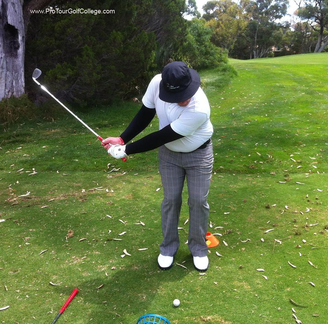 Complexity Level 3. (6 to 8 Weeks of Practice)
Level 3 strokes describe a stroke where your hands travel to height of your waist and the golf club to the height of your ear. This stroke is employed when you hit your pitch shots around the green. The upper body is starting to rotate to about half of its final position.  Complexity Level 4. (8 to 10 Weeks of Practice)
Level 4 strokes describe a stroke where your hands travel to height of your shoulder and the golf club above your rear shoulder. This stroke is employed when you hit your approach wedges into the green, greenside sand and trouble shots and many other types of approach shots. This stroke is also the full stroke for many golfers who may not have the flexibility or body type to swing their arms and hands higher than their shoulders with control. The upper body is starting to rotate to its final resting position and the hips are rotating almost fully.  Complexity Level 5. (10 to 12 Weeks of Practice)
The Level 5 stroke is the most complex stroke to learn and adjust because power generation is at its highest so timing of each element within the stroke is crucial. Level 5 strokes are full shots like tee-shots and hybrid shots into the green. This stroke describes an action where your hands travel higher than your shoulders and the golf club high above your rear shoulder. The upper body has rotated to its completion as have the hips, and the lead hand wrist has hinged fully as well as the rear elbow. 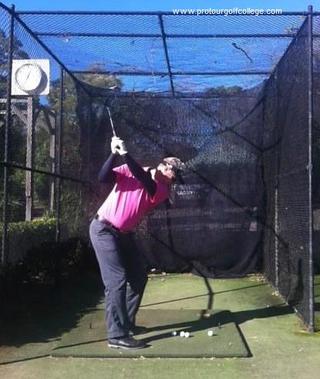 Golf stroke improvement is a function of deliberate effort minus distraction multiplied by time. To change the way a particular part of your golf stroke behaves under pressure requires a total commitment to practicing correctly. This means that you should practice without the distraction of ball-flight so that you can concentrate fully on translating the concept of the change into a recognizable 'feel.' You need to decide what level of complexity your stroke improvement falls into based on our complexity model and then plan your practice so that a higher volume of the work you perform is dedicated to changing the stroke. The graph below shows an aspect of how we plan a golf stroke change for a student at Pro Tour Golf College. It shows a micro-cycle of 7 days and the amount of balls hit each day with a target and without. The very best way to change a golf swing component is to eliminate the biggest distraction to every golfer - the target. By practicing hitting golf shots into a net you eliminate ball-flight and can get on with the job of habituating the proposed change to your golf stroke technique. We have found that the distraction of the ball-flight in making changes to your golf swing could add as much as 50 to even 100 percent more time to the actual change depending on the complexity level. Changing a golf stroke so that it functions differently is not an easy task for anyone, however by planning your approach carefully and also acknowledging the time required to fully habituate the stroke so that you can perform it under pressure you should be able to make the change faster than any other way.
The best of luck with your golf stroke changes and if you have any questions about my article please feel free to drop me a line. Lawrie Montague and David Milne - Pro Tour Golf College Comments are closed.
|
Archives
June 2019
|
Proudly Supported By
Copyright © 2011 - 2018 Pro Tour Golf College
Website Managed By Golf Performance Media
All Rights Reserved
Website Managed By Golf Performance Media
All Rights Reserved

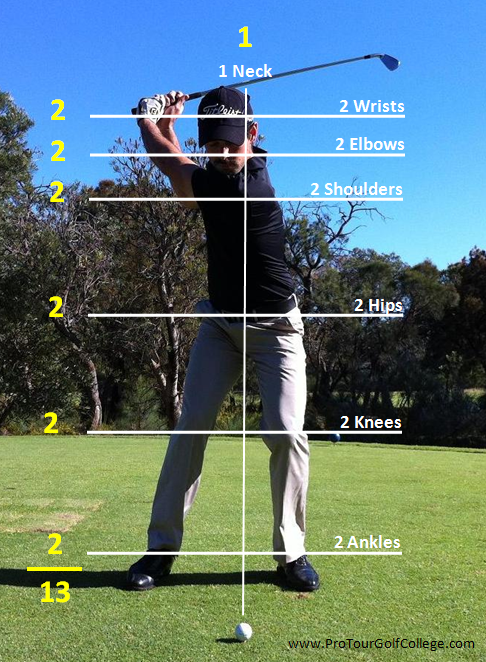

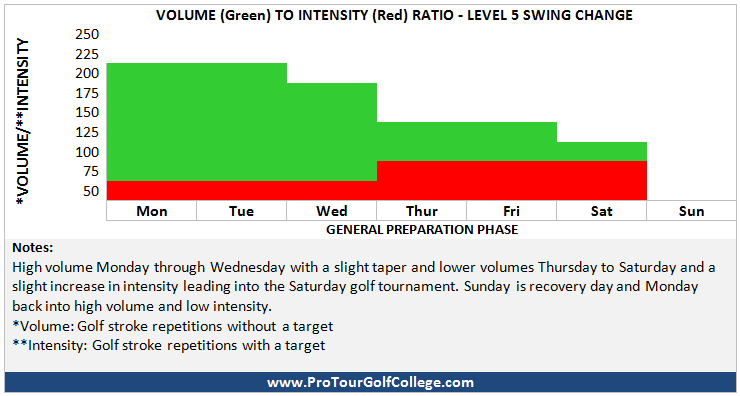
 RSS Feed
RSS Feed



